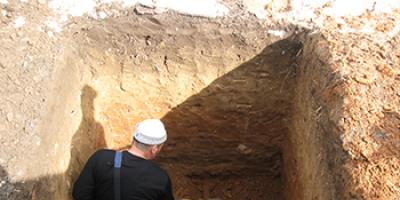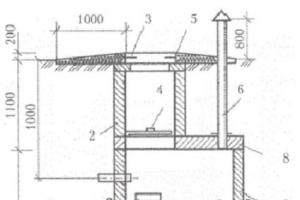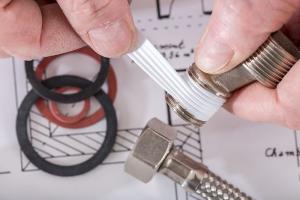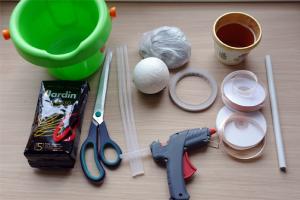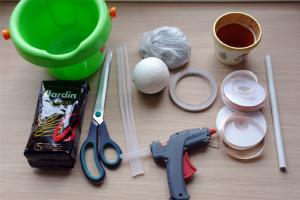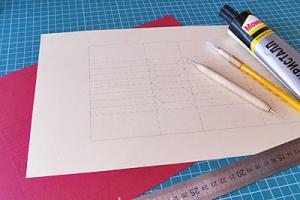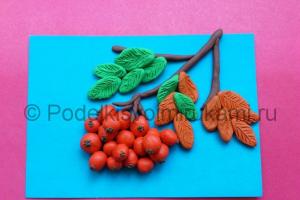There are some that will grow well in any conditions - be it indoors or outdoors. Having determined what type of flower the flower is, it becomes reliable to ensure the proper climate. All known plants are divided into species. Some can only be kept outside. Certain classes can be bred strictly at home without going outside. The main maintenance methods consist of adjusting the moisture content of the air, regularity of water flow into the soil and ensuring the correct temperature. The intensity of the sun is one of the main components.
Lagenaria, or gourd - bottle or dish gourd
What would it be autumn without pumpkins! Miracle pumpkin. Her Majesty Pumpkin, this is how this vegetable is respectfully called. Decorative pumpkin (gourd, lagenaria) - bottle or tableware pumpkin. Lagenaria, known to many, is precisely a variety of such a pumpkin - a gourd, similar in appearance to a bottle.
This plant is also called Vietnamese or Indian squash or cucumber. More than five centuries ago, the famous Russian explorer Afanasy Nikitin wrote in his book “Walking across Three Seas”: “This cucumber is strange, very long and has a pretty good taste.”
Lagenaria spread from India and Central Asia. According to Pliny, the ancient Romans made lagenaria fruits, which have the most different shape, vessels and even wine barrels. Lagenaria is also mentioned in the ancient manuscripts of China, where it was considered the queen of plants and was grown in the garden of Chinese emperors to prepare bowls that were used at dinner parties. Lagenaria is popular among many peoples of Africa. Light, well-dried fruits are used to make dishes and the famous African tam-tams; snuff boxes, ladles, and decorations are cut from them.
Many gardeners grow decorative pumpkins, from which they can make unusual dishes, boxes, and jugs. They are very colorful, and the food in them is kept fresh for a long time. People say that a dish gourd is called a gourd and even a bottle gourd. The fruits harvested in the fall are very attractive and very durable. Not so long ago, decorative pumpkins and dishes made from them were in wide use; they were used to hold pepper, salt, flour, and sugar. If you pour milk into a bottle like this, it won’t leak and stays fresh for a long time. vegetable oil- will not lose the aroma.
What explains such preservation of food in products made from tableware pumpkin? The fact is that harmful microorganisms do not grow in pumpkin. In addition, it has the properties of a thermos and does not allow heat to pass through. In a pumpkin vessel, the water remains cool for a long time.
It is also noteworthy that dishes made from pumpkin are durable. Such dishes can still be seen among grandmothers in village houses. The outer keratinized cover-crust is stronger than ceramics and, unlike it, is light, colored by nature itself. Even birdhouses are made from tableware pumpkins.
People used to believe that scary faces carved into pumpkins warded off evil spirits (see Halloween). The pumpkin symbolizes the end of the harvest, a carved scary mask from a pumpkin symbolizes an evil spirit, and a candle burning inside scares away evil spirits.
Now these wonderful fruits are increasingly used for beautiful compositions. You can make many different funny figures from decorative pumpkins, zucchini and garden greens.
How do they grow such a curiosity? Decorative jug pumpkins are produced in the same way as regular ones. They let go of a dish pumpkin like climbing vine, along the supports. Since tableware is considered heat-loving, in cold conditions it has to be grown through seedlings. The required form applied to fruits using dressings. The young fruit of the gourd can be eaten; the old fruit is most often used as a vessel or in the manufacture of musical instruments.
Young lagenaria fruits look like large zucchini. They have good taste and very high dietary qualities. When they are small (up to 50 cm long), they are eaten like ordinary cucumbers, to which they are in no way inferior in taste. But the most delicious dish from lagenaria is caviar, which is prepared like squash and surpasses the latter in taste.
The fruits are canned, pickled, used to make salads, pancakes, stuffed like regular zucchini, made into caviar, and sometimes even young stems and leaves are used for food. Since the peel of unripe fruits is thin and soft, it is not removed during pickling.
The most popular are two varieties of lagenaria - with bottle-shaped fruits and long-fruited lagenaria. The fruits do not differ significantly in taste, but the bottle fruit is grown mainly for beauty, and the long-fruited fruit is grown for food.
Lagenaria is a powerful vine, the main stem grows up to 15 meters long and in addition lateral branches up to 3 - 4 meters develop. The plant blooms continuously until frost, some flowers fade and new ones immediately open. One plant can have both flowers and fruits, and at this time lagenaria looks simply fantastic. Source: http://www.florets.ru
Decorative pumpkin prefers sunny, wind-protected places with fertile, breathable, slightly acidic (pH 5.6) soil. Decorative pumpkin is heat-loving: lowering the temperature to 14 degrees and below has a bad effect on fruiting. At a temperature of -1, young plants may die.
Decorative pumpkin is used to decorate walls, gazebos and other structures. A decorative pumpkin will look impressive both in an ornamental vegetable garden and in rural-style gardens.
Dried fruits decorative pumpkin serve as toys. To keep them longer, the pumpkins must be well-ripened (with rough and thick skin). To avoid color fading, decorative pumpkin fruits should be protected from direct sunlight.
Decorative pumpkin requires minimal care - periodic loosening and watering during dry periods. Responds very well to the addition of organic and mineral fertilizers. The first feeding is carried out two weeks after the emergence of seedlings, the second - after the formation of the first ovaries. A decorative pumpkin does not require shaping.
During the first autumn frosts, it is recommended to cover the plants with lutrasil to prolong fruiting.
Decorative pumpkin propagates by seeds. Before sowing, the seeds are germinated in a warm place. After germination, decorative pumpkin seeds are sown one at a time in pots with loose soil and placed in a warm greenhouse. They are planted in the ground with a clod of earth in early June, when the danger of frost has passed. When planting, it is recommended to maintain a distance of 70 cm between plants.
The following varieties of decorative pumpkin are popular:
'Crown'. The fruits are short cylindrical with serrations in the form of a crown. The coloring is varied. ‘Orange’ - fast growing variety with spectacular golden-orange fruits. The fruits are round, small, weighing 200-300 g. ‘Butternut’. The fruits are yellow, pin-shaped, tasty. ‘Turkish turban’. The fruits are small, turban-shaped, resembling turkish turban. The coloring is varied.
Categories
Decorative pumpkin – Benefit or beauty?
 In nature, there are many different pumpkins - with lumpy, ribbed or smooth skin; two-color, variegated, striped; green, gray, white, red, orange, yellow; crown-shaped, bottle-shaped, turban-shaped, pear-shaped, elongated, flattened and round.
In nature, there are many different pumpkins - with lumpy, ribbed or smooth skin; two-color, variegated, striped; green, gray, white, red, orange, yellow; crown-shaped, bottle-shaped, turban-shaped, pear-shaped, elongated, flattened and round.
Benefit or beauty? Everyone who decides to grow pumpkin crops will someday face this choice. The truly well-known decorative pumpkins are bitter and not used for food. Although there are a couple exotic ways decorate both the plate and the garden.
Decorative pumpkins are edible only when they are immature and young. Later, when the crust hardens and the seeds ripen, there is simply nothing to eat in these berries. Decorative inedible pumpkin can be either climbing or bush. Suitable for landscaping gazebos and verandas climbing species pumpkins, because they quickly grow along the trellis.
 Are there non-decorative pumpkins? It looks like there are such people in this huge family You just can't find it. Couldn’t table pumpkins be used as kitchen decorations, be they “Volga Gray” or “Stountovaya”? And what’s wrong with zucchini, zucchini and squash, which in essence are also hard-barked pumpkins?
Are there non-decorative pumpkins? It looks like there are such people in this huge family You just can't find it. Couldn’t table pumpkins be used as kitchen decorations, be they “Volga Gray” or “Stountovaya”? And what’s wrong with zucchini, zucchini and squash, which in essence are also hard-barked pumpkins?
This vegetable also has one peculiarity: try planting it in one bed various varieties squash, zucchini and pumpkins, and when collecting the fruits, you will be surprised at their shapes and colors, since plants of the same species have the ability to cross-pollinate. The family of pumpkin plants is simply inexhaustible in modifications and is always ready to present us with new and new surprises.
And if we start talking about large-fruited (turban-shaped) pumpkins that you just can’t get up to putting in a frying pan, warty momordica, mysterious chayote, bottle lagenaria and serpentine trichosanthus, then you can immediately understand that the topic of decorative pumpkins is simply inexhaustible.
 Growing decorative pumpkins is no different from growing ordinary ones. Decorative pumpkin needs well-drained, loose soil with a neutral reaction and a high content of humus. Cultivation is carried out by seedlings or sowing in the ground in early June. For full development, a pumpkin must be watered and fed on time every 20 days. If the seedlings are very dense, it is necessary to cut out a little side shoots and then the plants will have better lighting.
Growing decorative pumpkins is no different from growing ordinary ones. Decorative pumpkin needs well-drained, loose soil with a neutral reaction and a high content of humus. Cultivation is carried out by seedlings or sowing in the ground in early June. For full development, a pumpkin must be watered and fed on time every 20 days. If the seedlings are very dense, it is necessary to cut out a little side shoots and then the plants will have better lighting.
It is necessary to place the pumpkin so that the plant has the opportunity to “prove itself.” Pergolas, trellises and fences are well covered with climbing pumpkins, and they also spread well along paths, borders and lawns. Not only do they have beautiful fruits (about 40 pumpkins small sizes can form on one plant), but also large yellow flowers and large leaves.
Decorative forms of climbing pumpkins do not need to be shaped or trimmed. Only occasionally remove the leaves that cover the flowers. Bush forms are planted in tubs, flower beds and on lawns.
 Decorative pumpkin fruits are collected before frost sets in, and drying is carried out in a warm room. As soon as the fruits become lignified, you can make vases, boxes, salt shakers from them, or use them in phytocompositions.
Decorative pumpkin fruits are collected before frost sets in, and drying is carried out in a warm room. As soon as the fruits become lignified, you can make vases, boxes, salt shakers from them, or use them in phytocompositions.
- When to collect and how to preserve pumpkin Harvesting and storing pumpkins. Timing for harvesting pumpkin Pumpkin fruits, unlike other vegetables, are harvested once when they reach maturity. And only the fruits.
- The best varieties of pumpkin Pumpkin - varieties and types Variety "Palav-kadu" For culinary purposes, you can grow nutmeg pumpkin, Palav-kadu. It has orange skin and flesh. Cutting the fruit you can see how.
- Growing pumpkin in open ground How to grow a good pumpkin Preparing the soil For pumpkins, it is necessary to allocate well-warmed and illuminated areas on the southern slopes. Medium to light loam soils are best for pumpkins.
- Growing nutmeg pumpkin For nutmeg pumpkin, you will have to select the sunniest and warmest place on your site. It should be protected from the wind, with fertile, rich soil.
- Pumpkin - a useful giant History of pumpkin. Holidays and pumpkin English pilgrims left in the 18th century own houses and crossed the ocean on the Mayflower. They settled in America and built.
- How to grow lagenaria Lagenaria, or as it is also called bottle gourd, is one of the oldest cultivated plants that humanity knows. But they value it not for its taste.
- Why pumpkin is useful Pumpkin and its beneficial properties Pumpkin is one of the best diuretic plants. It contains potassium salts, iron, magnesium, sugar, calcium, and vitamins C.
Lagenaria pumpkin or bottle gourd - unusual plant, are especially attracted by its fruits in the form of an original vessel, the size and shape of which resembles either a bottle or a bowl. In our country, this plant is practically not grown, although in many countries pumpkin lagenaria has been known since time immemorial. What kind of plant is this, where it was bred, what it is used for - we will talk about all this below.
History of variety development
Where and when this plant first appeared is unknown, since in China, other countries of Asia, the Middle East and a number of African countries, the cultivation of bottle gourd began several thousand years ago. Other popular names for this pumpkin, which were given to it in different countries, – dish pumpkin, Vietnamese zucchini, Indian cucumber, lagenaria serpentine, gourd pumpkin.
Calabash
In China, this pumpkin was considered the king of all. vegetable crops. It was grown at the court of the emperor; from the fruits, craftsmen made vessels of various shapes, which were received as a reward by those who distinguished themselves, and this was considered a great honor.
And to this day, peoples in African and Asian countries make dishes from this plant, which is valued there higher than porcelain in civilized countries. Many types of kitchen utensils are made here from bottle gourd:
- buckets;
- bowls;
- mugs and other crafts.
The water doesn't get hot in these bowls. long time, milk stays fresh for a long time. These properties are explained by the fact that the thick skin of the fruit of this pumpkin does not let air in and is not exposed to the negative effects of various microorganisms.
Characteristics and features of bottle gourd
The stem of the dish gourd is more of a vine; it grows up to 13-14 m in length, it is slightly faceted, and when you touch it, you feel a slight pubescence. Pumpkin foliage is pentagonal, slightly corrugated, large, attached to the stem with a long petiole. Growing bottle gourd on the site is important not only for the sake of unusual fruits; this plant will perfectly decorate the landscape of any site. Its main advantage is its unusually beautiful flowers, shaped like large glasses, painted creamy in the morning, and by evening they become boiling white.
Note! Both male and female flowers appear on one plant, so lagenaria is a cross-pollinated plant.
These flowers can be immediately distinguished from each other - the male flowers have a longer peduncle. They fade very quickly, but new ones immediately appear to replace them. Therefore, the flowering of bottle gourd continues almost until mid-autumn. But during the day the flowers are closed, so to get more ovaries, they have to be pollinated artificially using cotton swabs or brushes.
The shape of the fruit is round, oval or pear-shaped, due to this original form from a distance it looks like someone hung bottles on the runaways as a joke unusual shape. And in length these fruits can grow up to 1.8-2.0 m, the minimum radius is 5 cm. One fruit can weigh from 0.5 to 1.4 kg. Therefore, no more than 12-14 fruits grow on each plant.
The yield of such a plant is high - up to 40 kg of fruit can be collected from one bush. They regulate the size of ripening fruits by pinching the side stems, as well as removing excess ovaries during the flowering process. The ripening period of fruits depends on the goals that vegetable growers set for themselves. For consumption, the fruits are harvested unripe; in this case, less than 3 months pass from the moment of sprouting to harvesting. Fruits used for crafts or other purposes may not be picked for 3.5-4 months.
The culture has strong roots. The main thick root penetrates 0.7-0.8 m deep into the ground, and lateral processes reach a length of 2.5-2.8 m. This plant is also capable of forming aerial roots.
Interesting: vegetable growers successfully use the powerful roots of bottle gourd as a rootstock - they graft cucumbers, watermelons and melons. As a result, these plants develop faster and their productivity increases.
After harvesting the bottle gourd, the seeds are collected from the fruits and used later to plant this vegetable plant.
Important! The seed of this variety of pumpkin has poor germination in the next season. In order for your seed material to have a germination rate close to 100%, it is better to plant them 3-4 years after collection.
Agrotechnics of cultivation
When growing this variety of pumpkin, you should pay attention to a number of nuances.
Since this plant is very heat-loving, in most regions of our country you first need to grow seedlings at home and only in mid-late May can they be planted in open ground.
Breeding lagenaria begins with germinating seeds for seedlings. Since the seed shell is very hard, without preliminary soaking you may simply not wait for the seedlings to appear. First, they should be placed in a thermos with hot (about 40⸰C) water for 24 hours. Then take it out, wrap it in damp gauze and place it in plastic bag before sprouts appear. The bag with seeds should be kept in a room with an air temperature of about 26-28⸰С.
After the seeds “hatch”, they can be placed in separate containers with a volume of about a liter. They need to be buried in nutrient soil to a depth of 2.5-3 cm. Growing bottle gourd seedlings in the future is no different from growing seedlings of other similar crops.
The soil in which mature lagenaria seedlings are planted must be fertilized, loose, with a neutral or slightly alkaline reaction. In those regions where there is a possibility of a strong drop in temperature during the growing period of vegetables (even at night), it is better not to grow bottle gourd in open ground; this plant is very thermophilic and often dies under such temperature changes.
Bottle pumpkin will decorate the garden
There should also be no stagnant moisture in the soil or no groundwater level close to the surface of the earth.
When planting lagenaria seedlings in open ground, you need to maintain a distance between plants - it should be at least a meter. You should immediately install trellises to which the vines will be tied as they grow. Perfect option– planting plants around the gazebo with tying vines to its walls and ceilings.
Caring for a growing bottle gourd involves regular watering, loosening the soil while simultaneously removing weeds and applying fertilizer.
Advantages and disadvantages of the variety
The undoubted advantages of lagenaria include:
- the possibility of using its fruits for making various crafts;
- partially ripened fruits are used for food, and there are a lot of recipes for preparing dishes from lagenaria - first and second courses, porridges, purees and much more are prepared from it. Pumpkin porridge made from lagenaria is especially tasty;
- highly decorative liana-like plant.
The main disadvantages should be noted:
- the plant is thermophilic and hypersensitive to strong temperature drops;
- You need to pick the fruits of this pumpkin for eating on time; if you delay a little, the flesh becomes hard and not very pleasant to the taste.
Lagenaria is one of those plants that, with its appearance will decorate any garden plot. And although in most regions of our country it can only be grown in greenhouse conditions, the effort is justified. The fruits of this exotic plant can be eaten, made from them all kinds of vessels, musical instruments. And in folk medicine lagenaria is highly valued for high content fruits contain valuable microelements, vitamins and other active substances.
Pumpkin dishes
Cherie Long
Cultivation of gourds (pot or bottle gourd) has been practiced for a long time: young pumpkins are eaten, and mature ones are dried, processed and made into light and durable vessels for liquids, etc. kitchen utensils, houses and bird feeders, Christmas tree decorations - and this is far from full list necessary and useful things that you can make with your own hands from pumpkins grown in your garden.
There are several varieties of hard-bark pumpkins, and many gardeners are probably familiar with the bright, small fruits of decorative pumpkins, but we want to introduce you to the gourd or lagenaria, the fruits of which, when dried, have an unusually durable brown rind.
How to grow gourd
The common gourd (Lagenaria siceraria) is a strong annual plant of the pumpkin family, a vine with a climbing or creeping stem up to 15 meters long, so if you have little space on your site, we advise you to direct the vines along the path or driveway, or even better, to launch them onto a fence, trellis or tree trunk. This is especially important for the correct formation of the fruits of the Dipper variety, which means “dipper”. In order for the “handle” to grow long and even, the fruits must hang freely. The fruits of the gourd ripen for quite a long time, so it is preferable to grow it in the southern regions, where the summers are long and hot. Simply plant the seeds 1 inch deep in the soil in the spring, just after the last frost. However, if certain rules are followed, gourd can be successfully grown in the north. So, we offer ten tips for growing gourds in northern latitudes:
1) Sprout seeds indoors a month to a month and a half before the end of frost, in 10-15 cm diameter pots. Kern Ackerman, an expert on hard-bark pumpkins from Ohio, recommends starting to germinate seeds even earlier, but keep in mind that plants grow quickly and their long whips can cause you a lot of trouble.
2) To start, choose a variety with small or medium fruits, such as Dipper or Martin House. Varieties with larger teapot-shaped fruits take a very long time to ripen, so growing them in northern climates is quite difficult, warns Kern, who nevertheless managed to grow a pumpkin measuring 50 cm in diameter.
3) Fertilize the soil with compost or complex fertilizer“Just don’t overdo it with nitrogen, otherwise everything will go to waste,” advises Kern.
4) Never overcool plants when planting in the ground! Wait until the frosts end and only then take the seedlings outside, but do not plant them right away, but gradually, over the course of a week, accustom the plants to new conditions: on the first day, leave them outside for fifteen minutes, on the second - for twenty minutes, and so on. Kern puts his seedlings in the back of his truck, walks them, and backs the truck into the garage at night.
5) Cover the seedlings with film or place them in a microgreenhouse. “The gourd does not like the cold spring wind, so cover the plants and they will quickly grow,” says Kern.
6) When the main lash reaches 3 m in length, it should be pinched. This will lead to the formation of side shoots with female flowers, from which fruits are set.
7) To get good result, we recommend pollinating the flowers by hand. The flowers of hard-barked pumpkins open at night, so in the evening pick two or three male flowers (they stand above the leaves, they have a thin stalk and, unlike female ones, there is no ovary under the flower). Then apply pollen from the anther of the male flower to the stigma in the center of the female flower (generally, female flowers are located at the bottom of the plant, they have a short stalk, and under the flower there is a round seal - the ovary). Hand pollination will provide you with more large fruits, says Kern. The more pollen that gets into the female flower, the larger the fruit will be.
8) Water the plants thoroughly until the end of August, and then stop watering. Dry soil promotes fruit ripening, says Kern.
9) Leave the fruits on the vines until the lashes dry completely. To grow a large hard-bark pumpkin in the north, where there are hot days, you have to leave the fruits on the vines even after the first frost. Don't worry if the leaves are caught by frost - the vines will not be damaged, and fruit development will continue.
10) Dry the pumpkins properly in the fresh air on pallets or boards. Don't worry if you notice mold on the outside of the pumpkin's rind. This is completely natural, and the mold creates a peculiar spotted pattern on the crust. Be patient: large pumpkins take months to dry. Check the condition of the fruits during the drying process: wrinkled and soft ones are not suitable for work.
Attention! Frost will not damage the fruits themselves, but frost is destructive for the seeds. So if you want to save the seeds, dry your pumpkins indoors!
How to clean and process fruits
When the pumpkins are completely dry, they will become very light and, if you shake them, you can hear the seeds rattling inside. Now it's time to start cleaning. Let's start by removing the dried outer skin. Soak the fruits in water for an hour, advise the authors of the Encyclopedia of Pumpkin Crafts (Lark Books, 1996), and then put the pumpkins in a plastic bag or wrap them in an old damp towel and leave them in the sun for several hours. After this, remove the softened skin with a copper washcloth. Sandpaper You can't use it - it will scratch smooth surface crusts. After removing the skin, rinse the pumpkin and let it dry.
Now you need to decide what exactly you will make from the pumpkin. I will share my experience. From a Bushel pumpkin, in just an hour I created a simple but rather elegant vase with a lid (a tureen, if you will). I cut out the top with a jigsaw - the lid is ready, covered the outside linseed oil- that's all! Pumpkin can be processed like wood: sawed with a saw, cut with a chisel, drilled with a drill, processed with a file, burned, sawed out with a jigsaw, carved (both manually and with a power tool), and then stained, painted, covered with drying oil, varnish, and so on.
Attention! When you open the pumpkin (to remove the seeds and dried pulp), be sure to pour water into it and then pour it out - so that the caustic dust does not get into your nose!
This is how many times I find articles about crafts or just about using lagenaria, it’s also a decorative pumpkin, they call it gourd on the Internet, other names: bottle or dish pumpkin, botanists call this plant lagenaria.
As a child, my aunt, a passionate gardener and experimenter, saw this miracle - EPS, as they called it, light and durable containers. She also called the plant KUBYSHKA. They were picking raspberries, and I, as the youngest, was given such a miracle; the handle was made of wire. Malin herself jumped into my Eggbox))
Lagenaria spread from India and Central Asia. According to Pliny, the ancient Romans made vessels and even wine barrels from lagenaria fruits of various shapes. Lagenaria is also mentioned in the ancient manuscripts of China, where it was considered the queen of plants and was grown in the garden of Chinese emperors to prepare bowls that were used at dinner parties. Lagenaria is popular among many peoples of Africa. Light, well-dried fruits are used to make dishes and the famous African tam-tams; snuff boxes, ladles, and decorations are cut from them.
Many gardeners grow decorative pumpkins, from which they can make unusual dishes, boxes, and jugs. They are very colorful, and the food in them is kept fresh for a long time. People say that a dish gourd is called a gourd and even a bottle gourd. The fruits harvested in the fall are very attractive and very durable. Not so long ago, decorative pumpkins and dishes made from them were in wide use; they were used to hold pepper, salt, flour, and sugar. If you pour milk into such a bottle, it will not leak and remains fresh for a long time; if you pour vegetable oil, it will not lose its aroma.
What explains such preservation of food in products made from tableware pumpkin? The fact is that harmful microorganisms do not grow in pumpkin. In addition, it has the properties of a thermos and does not allow heat to pass through. In a pumpkin vessel, the water remains cool for a long time.
It is also noteworthy that dishes made from pumpkin are durable. Such dishes can still be seen among grandmothers in village houses. The outer keratinized cover-crust is stronger than ceramics and, unlike it, is light, colored by nature itself. Even birdhouses are made from tableware pumpkins.
How do they grow such a curiosity? Decorative jug pumpkins are produced in the same way as regular ones. They let the dish gourd run along the supports like a climbing vine. Since tableware is considered heat-loving, in cold conditions it has to be grown through seedlings. The fruits are given the desired shape using dressings. The young fruit of the gourd can be eaten; the old fruit is most often used as a vessel or in the manufacture of musical instruments.
Young lagenaria fruits look like large zucchini. They have good taste and very high dietary qualities. When they are small (up to 50 cm long), they are eaten like ordinary cucumbers, to which they are in no way inferior in taste. But the most delicious dish from lagenaria is caviar, which is prepared like squash and surpasses the latter in taste.
The fruits are canned, pickled, used to make salads, pancakes, stuffed like regular zucchini, made into caviar, and sometimes even young stems and leaves are used for food. Since the peel of unripe fruits is thin and soft, it is not removed during pickling.
The most popular are two varieties of lagenaria - with bottle-shaped fruits and long-fruited lagenaria. The fruits do not differ significantly in taste, but the bottle fruit is grown mainly for beauty, and the long-fruited fruit is grown for food.
Lagenaria is a powerful vine, the main stem grows up to 15 meters long and in addition lateral branches up to 3 - 4 meters develop. The plant blooms continuously until frost, some flowers fade and new ones immediately open. One plant can have both flowers and fruits, and at this time lagenaria looks simply fantastic.
Decorative pumpkin is an annual plant. Anyone can grow it, even those who are not at all experienced gardener. The only thing to remember is the absolute absence of any frost resistance. The plant dies already at a temperature of minus 1 °C. Therefore, the least labor-intensive method of growing, in the form of sowing in the ground in the second half of May, is not suitable for everyone. Where there are return frosts, it is better to grow it through seedlings.
Other enemies of decorative pumpkin are poor soils and moisture deficiency. It is recommended to fertilize and water it as often as possible. It is better to use organic fertilizers - like all pumpkins, decorative ones also like to grow on a compost heap.
Each plant is capable of producing from 20 to 40 small pumpkins, no more than 15 cm in diameter. To speed up the growth of side shoots, it can be useful to pinch the main stem when it reaches a length of more than a meter. If you want a lot of flowers and, especially, fruits, plant a decorative pumpkin in a sufficiently lit place. Of course, it will also grow near the northern wall of the house or fence, but it will not produce such vigorous flowering.
The support for a decorative pumpkin must be strong and reliable - at the end of summer, the stems of this vine weigh much more than the stems of ivy or hops. In hot and not too dry summers, it grows at a truly amazing speed, quickly taking over all the space provided to it.
All decorative pumpkins are propagated by seeds. They are large and require preliminary germination somewhere in a warm place. When the seeds germinate, they are sown in tall cups, such that it will not be difficult to remove the seedlings along with the soil. Glasses or pots must be high for the growth of the central taproot, which, like all pumpkins, goes half a meter or more deep into the ground.
Seedlings are planted in open ground in June. Temperatures below 14 °C have a negative effect on seedlings, delaying the onset of flowering. It will require minimal care: watering and periodic loosening of the soil. The first fertilizing should be done approximately 14 days after emergence. The second is when the first ovaries form. Forming a decorative pumpkin is usually not done. Closer to autumn, when the first night frosts are possible, it is better to cover it non-woven material, which will significantly prolong fruiting.
Dried fruits of decorative pumpkin are often used to create original flower arrangements, caskets, vessels and other similar things. To do this, they must be picked when fully ripe, when the skin becomes thick and rough, like wood. To give it the desired look, the pumpkin is coated with varnish and special paint, and the selected pattern or ornament is applied. If the pumpkins were picked not yet ripened enough, they are left in a warm place, but not in the sun, to ripen completely. Ripe decorative pumpkins can be stored for several years. It is also impossible to be late in harvesting fruits - caught by the first autumn frosts, they become unsuitable for storage and making crafts.
Due to the ease of crossing, there are a huge number of varieties and hybrids of decorative pumpkin. And although they are suitable for food only at a very young age, they occupy a worthy place in the pumpkin family.
Tangerine pumpkin is round and orange, like a citrus fruit corresponding to its name. Star squash fruits look like spiked squash or starfish. But the variety “Baby Boo” has fruits white and as if cast from paraffin. The pear squash has smooth, pear-shaped pumpkins that come in orange, yellow, and even two colors—with a distinct border between both parts. All of them belong to the common figured pumpkin.
More rare species– Vicoleaf and Texas pumpkin. The first is considered one of the most decorative. It has beautiful lobed leaves and amazing variegated fruits - round or slightly oblong, green with white stripes or the same specks. It crosses well with other species, giving a wide variety of shapes and colors.
Texas pumpkin is sometimes considered a variety of pumpkin. Its ovoid or pear-shaped fruits ripen on very long stems.
In addition to climbing or climbing ones, there are also bush decorative pumpkins, which are grown in almost the same way as zucchini. They can be successfully used in flower beds or container plantings.
More than five centuries ago, the famous Russian explorer Afanasy Nikitin wrote in his book “Walking across Three Seas”: “This cucumber is strange, very long and has a pretty good taste.”
Lagenaria is a representative of decorative pumpkins, having the appearance of vines more than 10 meters long with amazing - long, pear-shaped, maracas or matryoshka-shaped fruits. In our area, this pumpkin is also known by the names gourd, calabash, “goose in apples,” bottle gourd, and snake pumpkin, depending on the variety and shape. Planting and caring for lagenaria are practically no different from ordinary pumpkins, so why not grow such an exotic plant in your garden?
Lagenaria: biological features
Lagenaria belongs to the pumpkin family, but is classified as a separate genus Lagenaria. That is, for (nutmeg, hard-barked, large-fruited), for cucumbers, melons and watermelons - this is a cousin. Its homeland is tropical regions. This is an annual plant with beautiful fluffy leaves and small white-yellow flowers (which, by the way, smell great). From one vine you can collect 10-15 pumpkins weighing on average 1-1.5 kg and about half a meter long. Although some varieties of lagenaria can grow up to two meters in length and weigh about 8 kg!
There are at least seven species of Lagenaria:
- Lagenaria siceraria - Lagenaria vulgaris. It is this type of pumpkin, Lagenaria, that is most widely represented on garden plots our country. Lagenaria vulgaris includes snake-like forms, “goose in apples”, and nesting dolls, and maracas, and pears, and other intricate pumpkins.


- Lagenaria breviflora
- Lagenaria guineensis


Not all varieties of lagenaria are suitable for consumption even at a young age. The flesh of some is similar to pumpkin, with a slight spicy aftertaste; the flesh of others is more reminiscent of bitter cotton wool. Indeed, the decorative pumpkin lagenaria contains cucurbitacin - the same one that causes... But cucumbers contain relatively little of this toxin, but the juice of lagenaria, not intended for human consumption, can become real poison.

Therefore, pay attention to the information about the possibility of using a specific variety of Lagenaria pumpkin for food, which the breeder indicates on the packaging. Better yet, grow lagenaria for beauty, not for food))
Germinating lagenaria seeds
If you are using for growing lagenaria your own seeds, do not forget: pumpkin seeds should be sown 2-4 years after collection. If the seeds are too fresh, you won’t get any fruit.

Many amateur gardeners complain that a lagenaria seed stuck into dry soil does not germinate. To avoid such an unpleasant start to growing exotics, lagenaria seeds should be prepared for planting.
1) Place the seeds in a fabric envelope, place the envelope in a saucer and thoroughly moisten it with warm, preferably melted water, and place it in a warm place. If desired, you can add germination stimulants to the water.
2) After 3-4 days, remove the seeds with the swollen seed coat. Now you need to help the sprout get out of the relatively strong seed. To do this, the top of the seed should be cut off or sawed off, or even easier, bite it with your teeth, slightly cracking it, as if you were eating regular pumpkin seeds. The cracked lagenaria seeds are again placed in a damp cloth envelope and kept warm for several days until sprouts appear from the seed. After this, they are transplanted into cups with soil - one in each.
Growing lagenaria seedlings
In the southern regions, lagenaria seeds can be planted directly into the ground, and in middle lane This plant is best grown through seedlings. The fact is that lagenaria fruits reach maturity no earlier than three months after planting. But, since this fruit is grown, for the most part, in decorative purposes, the lagenaria should spend some time on the vine so that the pumpkin skin hardens well. If the pumpkin does not have time to harden before frost, it will either be damaged by frost, or it will begin to rot when stored at home, picked unripe.

Thus, at the end of April we begin germinating lagenaria seeds, at the beginning of May we plant sprouts in cups with soil, deepening them 1.5-2 cm into the ground. For lagenaria, the most common nutritious, loose one is suitable. Wet the soil thoroughly from time to time. After about a month, the lagenaria seedlings are transferred to open ground. The main thing is that at this time - the end of May, the beginning of June - there is no longer a threat of night frosts.
Caring for lagenaria
Planting and caring for lagenaria grown through seedlings is very simple. Seedlings or seeds are planted at least a meter apart. This is a heat-loving plant, so give preference to the south side. Lagenaria does not like acidic soils.
This pumpkin, like , is planted not in the middle of the garden, but near fences, gazebos, walls, otherwise the plant, as it grows, will deprive its neighbors in the garden of light (one plant can cover an area of 6 “squares”). In any case, decorative lagenaria needs strong support.
Feeding for lagenaria on good soil is not required, but with weak growth before flowering you can feed with organic matter - mullein, grass fertilizer etc. Watering - as necessary, but only warm water. This plant is relatively resistant to traditional and other pumpkin plants, but with a sharp change in temperature (including soil), rot, anthracnose or powdery mildew may appear on the lagenaria.
When the plant reaches two meters in length, the stem and side shoots are pinched. You can also remove some of the ovaries so that the remaining fruits are better formed. Lagenaria flowers bloom in the evening and close in the morning. Some gardeners recommend pollinating plants by picking male flower and fanning the female with it.

Lagenaria fruits ripen in September-October. They can be removed from the vine as it ripens, always with the stalk attached. In the article we talked about the best drying for any decorative pumpkin - directly on the vine, or simply in the fresh air. For a well-ripened fruit with a hard shell, frost and rain do not pose any threat.

Vaccination of cucumbers, melons, watermelons against Lagenaria
Another feature of bottle gourd is its rapid growth and powerful root system. Using these, experimental gardeners graft its close relatives onto Lagenaria - cucumbers, melons, watermelons. Why is this being done? The scion develops more intensively, begins to bear fruit earlier and more abundantly, and lagenaria is less prone to diseases than other pumpkins.
As an example, we’ll tell you how to graft a cucumber onto lagenaria using the reed method:
1) We plant cucumber seeds in a separate cup, after three days we plant lagenaria seeds in another cup (lagenaria grows much faster). After another four days, when the plants are almost the same height (5-10 cm) and the stem thickness reaches approximately 0.5 cm, we begin grafting.
2) We pinch the growth point of lagenaria seedlings.
3) Prepare a container with soil. The size of the container should be such that it can easily accommodate lagenaria and cucumber seedlings with a lump of earth. We put a little soil at the bottom of the container, carefully remove the seedlings of both plants from the glass and place them side by side in a new container. Try to bring the plants closer to each other and make sure they are at the same level.
4) Using a blade, cut the stem of the lagenaria from top to bottom. The length of the cut is up to 1 cm, the depth is half the stem. We cut the cucumber stem in the same way, but only from the bottom up. We insert the tongue of the cucumber to the tongue of the lagenaria and fix it with the help of special mini-clips. If not available, the latter can be replaced with thin strips of adhesive tape or electrical tape. After this, the plants are watered, shaded for several hours, and then exposed to the sun.
5) After five days, we help the cucumber switch to nutrition from lagenaria. To do this, crush the cucumber stem a little below the grafting site, and after another five days, cut it off completely.

If the grafting is successful, the cucumber will begin to develop rapidly and you will get a bountiful, earlier harvest.
Application of lagenaria
As already mentioned, when young, some varieties of lagenaria are suitable for consumption. In addition, this type of pumpkin is used in folk medicine to combat diseases of the cardiovascular system, kidneys, liver, bladder, and stomach.
But the main use of lagenaria pumpkin is decorative. Dried lagenaria is used to make amazing dishes, musical instruments, toys, smoking pipes, candlesticks and everything that your imagination allows.
 It’s not for nothing that lagenaria is called “dish gourd” or “bottle gourd.”
It’s not for nothing that lagenaria is called “dish gourd” or “bottle gourd.” Tatyana Kuzmenko, member of the editorial board, correspondent of the online publication "AtmAgro. Agro-industrial Bulletin"


